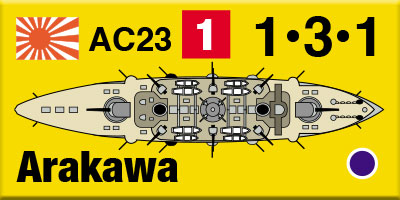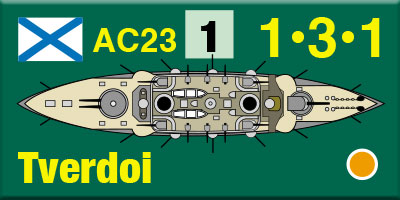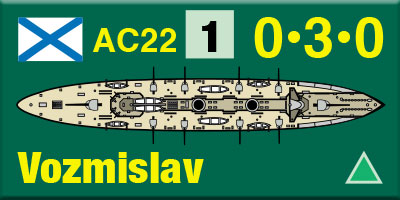| Golden Journal No. 52
Russo-Japanese War: Shopping Spree
Publisher’s Preview
by Mike Bennighof, Ph.D.
February 2023
 In the months leading up to the 1904 Russo-Japanese War, both sides tried to bolster their fleets. Ships on order for third-party navies in British and Italian shipyards got most of the attention, but brokers also worked to pry loose existing warships from minor navies and sell them to the belligerents. In the months leading up to the 1904 Russo-Japanese War, both sides tried to bolster their fleets. Ships on order for third-party navies in British and Italian shipyards got most of the attention, but brokers also worked to pry loose existing warships from minor navies and sell them to the belligerents.
In the end, the Japanese scored a pair of armored cruisers, while the Royal Navy ended up with two unwanted battleships bought to keep them out of Russian hands. Most of the ships on which the back-room intrigues centered remained with their previous owners. But the deal-making was no less intense for the ultimate lack of results.
Those deals are the topic of our Golden Journal No. 52: Russo-Japanese War Shopping Spree. It’s an expansion for Great War at Sea: Russo-Japanese War, with 20 new die-cut and silky-smooth pieces, their story, and scenarios so you can play with those silky-smooth pieces. We look at the ships offered up for sale – some of them fairly crapulent vessels their owners would eagerly have seen steam over the horizon just ahead of the junk dealer, others first-rate warships in high demand – and the efforts of both Russia and Japan to acquire them.

Feeling themselves facing an existential crisis, the Japanese made greater efforts than the Russians to buy additional warships. Most Russian efforts seem to have been more concerned with blocking the Japanese, even if that meant they had to buy the ships themselves. The culture of corruption surrounding the Imperial Russian Navy encouraged such secret dealings, where bribery had official sanction.

The big prizes in this scramble for new ships would be the pair of battleships under construction for Chile in British yards. Both of those are included in Russo-Japanese War, in both Japanese and Russian colors. In the end the British Royal Navy ended up buying them to keep them out of Russian hands, which satisfied no one, least of all the Royal Navy.

But Chile had other ships already in her possession and available for sale. The Chileans had done business with the Japanese before, selling them a cruiser for use in the 1894 Sino-Japanese War, and was ready to listen to offers on the coastal battleship Capitan Prat and the armored cruisers Blanco Encalada and Esmerelda.

Prat had little value to the belligerents: slow, weakly armed and poorly built, she had been a waste of money when built in France in 1891. But she attracted an American offer in 1898, during the run-up to the Spanish-American War, and the Japanese appear to have made a serious offer in 1903. Neither of these panned out and she went through several evolutions as an active warship, disarmed hulk, submarine depot ship and training ship before finally meeting the cutters in 1942.

Chile’s quartet of cruisers had a great deal more attraction to both sides. Esmerelda, the world’s first armored cruiser, had attracted both the United States and Spain in 1898 but the bidding war did not result in a sale. Both the Russians and Japanese seem to have actually desired her, as they did the much more capable armored cruiser O’Higgins, another so-called “Elswick cruiser” and similarly the object of an 1898 frenzy.

The Chileans had purchased the protected cruiser Ministro Zenteno in 1895 when Brazil could not afford to complete her; the Americans bought her two sisters but the Chileans held onto their ship. She was not as attractive a purchase as the two armored cruisers, but appears to have been in play all the same. The protected cruiser Blanco Encalada, a slightly larger ship also built at Elswick, appears to have attracted less interest.
Daily Content includes no AI-generated content or third-party ads. We work hard to keep it that way, and that’s a lot of work. You can help us keep things that way with your gift through this link right here.
All of the Chilean ships carried with them the Chilean navy’s reputation for excellent maintenance work; the cruisers built in the 1890’s soldiered on into the 1930’s and 1940’s with a few modernizations. They would not need a lengthy dockyard period after delivery, giving the Chileans highly sought assets in the days before Russia and Japan went to war.

Chile had built her squadron during a dispute with Argentina over sovereignty at the very southern tip of South America. Not settling for half measures, the Argentines ordered six armored cruisers in Italy, all to the same design (at least as ordered; they would be completed with different armament configurations). Four Garibaldi-class armored cruisers had been ordered in 1896, and two more in 1902 at the height of the dispute with Chile (ships originally ordered for the Royal Italian Navy). The Argentines sold the two new ships to the Japanese, and passed word that they would entertain offers on the four they already held.
That would give either rival a more-or-less homogenous squadron, making the Argentine squadron one of the great prizes of the publicly very quiet frenzy. The Argentines would eventually bow to British pressure and take their ships off the market, keeping the ships for the next several decades.
Brazil appears to have put her two coast-defense battleships on the market as well, slow, small and weakly-armored and -armed ships built in France at the turn of the century. Unlike the Chilean and Argentine ships, the Brazilians had a harder time attracting buyers as they sought to sell off their coast-defense ships and use the proceeds to build genuine high seas battleships.

Finally, there was Ottoman Turkey. The Turks became deeply involved in the warship market as shadow buyers, claiming to be buying the ships on the Sultan’s behalf but actually acting for the Russians or the Japanese. The use of such a straw buyer would avoid British reluctance to allow ships under construction there to be sold to an active belligerent. The Turks seem to have played for both sides, and at some point their negotiators tried to place their ancient ironclad Mesudiye on the table, then completing a radical reconstruction in Italy into a small and weak pre-dreadnought battleship. They did not get any takers.
The best part of the Golden Journal is that it’s free – that’s right, free – to the Gold Club, at least when we first offer it. After that, you have to pay for it.
The Golden Journal is only available to the Gold Club (that’s why we call it the Golden Journal).
Click here to join the Gold Club.
See your Gold Club Insider newsletter for ordering information.
Sign up for our newsletter right here. Your info will never be sold or transferred; we'll just use it to update you on new games and new offers.
Mike Bennighof is president of Avalanche Press and holds a doctorate in history from Emory University. A Fulbright Scholar and NASA Journalist in Space finalist, he has published a great many books, games and articles on historical subjects; people are saying that some of them are actually good.
He lives in Birmingham, Alabama with his wife, three children, and new puppy. He misses his lizard-hunting Iron Dog, Leopold.
Daily Content includes no AI-generated content or third-party ads. We work hard to keep it that way, and that’s a lot of work. You can help us keep things that way with your gift through this link right here.
|
